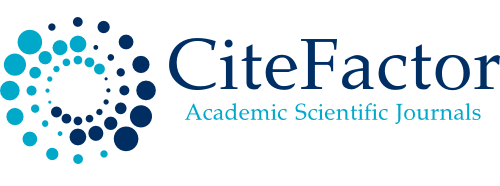THE ROLE OF CYP3A4*1B POLYMORPHISM IN THE DEVELOPMENT OF PHARMACORESISTANTEPILEPSY IN UZBEK POPULATION
DOI:
https://doi.org/10.61841/d7jak294Keywords:
cyp3a4*1b polymorphism,, pharmacoresist, antepilepsy, populationAbstract
Depending on the assessment method, data on the prevalence of epilepsy may vary, however, this neurological disorder is considered one of the most common. [1]. With appropriate treatment with antiepileptic drugs, about 60-70% of patients can be relieved of seizures, however, despite the progress made in the treatment of epilepsy and the emergence of the latest antiepileptic drugs, from 30 to 40% of patients are pharmacoresistant[2,3,4]. Pharmacoresistant epilepsy is defined as the inability to achieve a stable remission of seizures when using two well-tolerated and correctly selected antiepileptic drugs (in mono- or polytherapy mode) [5]. In addition to relapsing seizures, patients with drug-resistant epilepsy often experience psychosocial problems, an increased risk of injury, and a risk of sudden unexpected death (SUDEP) [4,6].
Downloads
References
1. Helmers S.L., Thurman D.J., Durgin T.L., … Descriptive epidemiology of epilepsy in the U.S. population: A different approach //Epilepsia. 2015 Jun;56(6):942-8. //doi: 10.1111/epi.13001. Epub 2015 Apr 29.
2. Berg A.T., Shinnar S., Levy S.R., … Early development of intractable epilepsy in children: a prospective study // Neurology. 2001 Jun 12;56(11):1445-52.
3. Lipatova L.V., Skoromets T.A., Gromov S.A., … Experience of Using Vagus Nerve Stimulation to Treat Drug Resistant Epilepsy // Neurology, Neuropsychiatry, Psychosomatics. 2014; (1S):18–21. // DOI: http://dx.doi.org/10.14412/2074-2711-2014-1S-18-21
4. Henning O., Lossius M.I., Lima M., … Refractory epilepsy and nonadherence to drug treatment // Epilepsia Open. 2019 Nov 6;4(4):618-623. // doi: 10.1002/epi4.12367. eCollection 2019 Dec.
5. BobylovaM.Yu., MukhinK.Yu. Perampanel in the treatment of drug-resistant epilepsy in children // RUSSIAN JOURNAL of CHILD NEUROLOGY. 2017. V.12. №4. P.7-20. // DOI: 10.17650/2073-8803- 2017-12-4-7-20
6. May T.W., Israel C.W. [Sudden unexpected death in epilepsy (SUDEP) : Epidemiology, cardiac and other risk factors]. [Article in German] // HerzschrittmachertherElektrophysiol. 2019 Sep;30(3):274-286. // doi: 10.1007/s00399-019-00643-0.
7. Paolicchi J.M. The spectrum of nonepileptic events in children // Epilepsia. 2002;43 Suppl 3:60-4.
8. Emich-Widera E., Likus W., Kazek B., … CYP3A5*3 and C3435T MDR1 polymorphisms in prognostication of drug-resistant epilepsy in children and adolescents // Biomed Res Int. 2013;2013:526837. // doi: 10.1155/2013/526837. Epub 2013 Aug 1.
9. Silva-Alves M.S., Secolin R., Carvalho B.S., … A Prediction Algorithm for Drug Response in Patients with Mesial Temporal Lobe Epilepsy Based on Clinical and Genetic Information //PLoS One. 2017 Jan 4;12(1):e0169214. // doi: 10.1371/journal.pone.0169214. eCollection 2017.
10. López-García M.A., Feria-Romero I.A., Serrano H., … Influence of genetic variants of CYP2D6, CYP2C9, CYP2C19 and CYP3A4 on antiepileptic drug metabolism in pediatric patients with refractory epilepsy //Pharmacol Rep. 2017 Jun;69(3):504-511. // doi: 10.1016/j.pharep.2017.01.007. Epub 2017 Jan 19.
11. Ikeda T. Drug-induced idiosyncratic hepatotoxicity: prevention strategy developed after the troglitazone case // Drug MetabPharmacokinet. 2011;26(1):60-70. // Epub 2010 Dec 17.
12. Zahno A., Bouitbir J., Maseneni S., … Hepatocellular toxicity of clopidogrel: mechanisms and risk factors
//Free Radic Biol Med. 2013 Dec;65:208-216. // doi: 10.1016/j.freeradbiomed.2013.06.007. Epub 2013 Jun 11.
13. Tolosa L., Jiménez N., Pérez G., … Customized in vitro model to detect human metabolism-dependent idiosyncratic drug-induced liver injury //Arch Toxicol. 2018 Jan;92(1):383-399. // doi: 10.1007/s00204- 017-2036-4. Epub 2017 Jul 31.
14. Inoue K., Inazawa J., Nakagawa H., … Assignment of the human cytochrome P-450 nifedipine oxidase gene (CYP3A4) to chromosome 7 at band q22.1 by fluorescence in situ hybridization //Jpn J Hum Genet. 1992 Jun;37(2):133-8.
15. Abdel-Kahaar E., Winter S., Tremmel R., … The Impact of CYP3A4*22 on Tacrolimus Pharmacokinetics and Outcome in Clinical Practice at a Single Kidney Transplant Center // Front Genet. 2019 Sep 26;10:871. // doi: 10.3389/fgene.2019.00871. eCollection 2019.
16. Op den Buijsch R.A., Christiaans M.H., Stolk L.M., … Tacrolimus pharmacokinetics and pharmacogenetics: influence of adenosine triphosphate-binding cassette B1 (ABCB1) and cytochrome (CYP) 3A polymorphisms // Fundam Clin Pharmacol. 2007 Aug;21(4):427-35.
17. Ball S.E., Scatina J., Kao J., … Population distribution and effects on drug metabolism of a genetic variant in the 5' promoter region of CYP3A4 //Clin PharmacolTher. 1999 Sep;66(3):288-94.
18. Sata F., Sapone A., Elizondo G., … CYP3A4 allelic variants with amino acid substitutions in exons 7 and 12: evidence for an allelic variant with altered catalytic activity //Clin PharmacolTher. 2000 Jan;67(1):48-56.
19. Kotowski M.J., Bogacz A., Bartkowiak-Wieczorek J., … Effect of Multidrug-Resistant 1 (MDR1) and CYP3A4*1B Polymorphisms on Cyclosporine-Based Immunosuppressive Therapy in Renal Transplant Patients //Ann Transplant. 2019 Feb 25;24:108-114. // doi: 10.12659/AOT.914683.
20. Jaramillo N.M., Galindo I.F., Vázquez A.O., … Pharmacogenetic potential biomarkers for carbamazepine adverse drug reactions and clinical response //Drug Metabol Drug Interact. 2014;29(2):67-79. // doi: 10.1515/dmdi-2013-0046.
21. Puranik Y.G., Birnbaum A.K., Marino S.E., … Association of carbamazepine major metabolism and transport pathway gene polymorphisms and pharmacokinetics in patients with epilepsy
//Pharmacogenomics. 2013 Jan;14(1):35-45. // doi: 10.2217/pgs.12.180.
22. Yun W., Zhang F., Hu C., … Effects of EPHX1, SCN1A and CYP3A4 genetic polymorphisms on plasma carbamazepine concentrations and pharmacoresistance in Chinese patients with epilepsy //Epilepsy Res. 2013 Dec;107(3):231-7. // doi: 10.1016/j.eplepsyres.2013.09.011. Epub 2013 Sep 30.
23. He X.J., Jian L.Y., He X.L., … Association of ABCB1, CYP3A4, EPHX1, FAS, SCN1A, MICA,
and BAG6 polymorphisms with the risk of carbamazepine-induced Stevens-Johnson syndrome/toxic epidermal necrolysis in Chinese Han patients with epilepsy // Epilepsia. 2014 Aug;55(8):1301-6. // doi: 10.1111/epi.12655. Epub 2014 May 23.
Downloads
Published
Issue
Section
License

This work is licensed under a Creative Commons Attribution 4.0 International License.
You are free to:
- Share — copy and redistribute the material in any medium or format for any purpose, even commercially.
- Adapt — remix, transform, and build upon the material for any purpose, even commercially.
- The licensor cannot revoke these freedoms as long as you follow the license terms.
Under the following terms:
- Attribution — You must give appropriate credit , provide a link to the license, and indicate if changes were made . You may do so in any reasonable manner, but not in any way that suggests the licensor endorses you or your use.
- No additional restrictions — You may not apply legal terms or technological measures that legally restrict others from doing anything the license permits.
Notices:
You do not have to comply with the license for elements of the material in the public domain or where your use is permitted by an applicable exception or limitation .
No warranties are given. The license may not give you all of the permissions necessary for your intended use. For example, other rights such as publicity, privacy, or moral rights may limit how you use the material.









